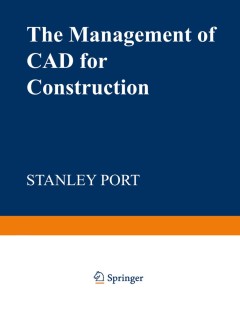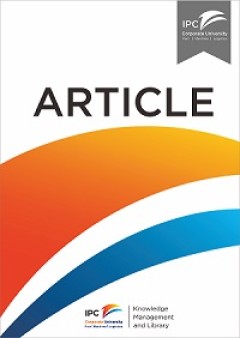Ditapis dengan

New Models for Sustainable Logistics Internalization of External Costs in Inv…
Logistics of transport systems is a key driver for the growth of whatever economy. Freight transport allows production systems or common citizens to receive or send materials or finished goods required by processes as well as by everyday life However, the overall transport sector accounts worldwide for more than half of global liquid fossil fuels consumptions which, in turn, is responsible for …
- Edisi
- 2015
- ISBN/ISSN
- 978-3-319-19710-4
- Deskripsi Fisik
- 111P
- Judul Seri
- New Models for Sustainable Logistics
- No. Panggil
- ATC MG DIG n

Tactical planning models for managing container flow and ship deployment
This paper addresses two practical problems from a liner shipping company, i.e. the container flow management problem and the ship deployment problem, at the tactical planning level. A sequential model and a joint optimisation model are formulated to solve the problems. Our results show that the company should implement the joint optimisation model at the tactical planning level to improve the …
- Edisi
- VOL. 38, NO. 5, 487–508
- ISBN/ISSN
- 1464–5254
- Deskripsi Fisik
- 23 p.
- Judul Seri
- Tactical planning models
- No. Panggil
- ATC LO LIU t

Optimal stack layout in a sea container terminal with automated lifting vehicles
Container terminal performance is largely determined by its design decisions, which include the number and type of quay cranes, stack cranes, transport vehicles, vehicle travel path and stack layout.We investigate the orientation of the stack layout (parallel or perpendicular to the quayside) on the throughput time performance of the terminals. Previous studies in this area typically use deter…
- Edisi
- 2017
- ISBN/ISSN
- 1366-588X
- Deskripsi Fisik
- 20P
- Judul Seri
- International Journal of Production Research
- No. Panggil
- ATC LO GUP o

Hybrid approaches based on SARIMA and artificial neural networks for inspecti…
In this paper, the number of goods subject to inspection at European Border Inspections Post are predicted using a hybrid two-step procedure. A hybridization methodology based on integrating the data obtained from autoregressive integrated moving averages (SARIMA) model in the artificial neural network model (ANN) to predict the number of inspections is proposed. Several hybrid approaches are c…
- Edisi
- -
- ISBN/ISSN
- 1366-5545
- Deskripsi Fisik
- 13 p.
- Judul Seri
- Transportation Research Part E
- No. Panggil
- ATC PO LAR h

The Management of CAD for construction
- Edisi
- -
- ISBN/ISSN
- 978-1-4684-6605-8
- Deskripsi Fisik
- xii, 228 p.
- Judul Seri
- -
- No. Panggil
- TXT MG STA m
- Edisi
- -
- ISBN/ISSN
- 978-1-4684-6605-8
- Deskripsi Fisik
- xii, 228 p.
- Judul Seri
- -
- No. Panggil
- TXT MG STA m

Supply demand chain modeling utilizing logistical-based costing
The purpose of this research is to describe how total cost concept with logistical based costing (LBC) is developed in detail and then used to build logistical models on the Microsoft Excele platform that are integrated from the customer’s factory to the supplier’s door.
- Edisi
- Vol. 19 No. 3, 2006
- ISBN/ISSN
- -
- Deskripsi Fisik
- 17 p.
- Judul Seri
- Journal of Enterprise Information Management
- No. Panggil
- ATC LO STO s

Creating and assessing composite indicators: dynamic applications for the por…
Explaining the dispersion of economy-wide fluctuations, national and global, has been long sought by economists. Short- and long-lived versions of economic fluctuations are transmitted and reflected on the port and maritime industries. Through the creation and assessment of composite indicators, utilizing non-parametric spectral domain approaches, we are able to: (a) Extend the context inwhich …
- Edisi
- -
- ISBN/ISSN
- -
- Deskripsi Fisik
- 34 p.
- Judul Seri
- -
- No. Panggil
- ATC PO ANG c

How definitions of talent suppress talent management
Purpose – The purpose of this paper is to understand the limitations of popular approaches to defining talent, where definitions are focused on determining specific attributes that differentiate someone as talent. It is suggested that rather than focus solely on definitions of talent, considering talent and success as distinct and separate enables a more holistic approach to engaging talent a…
- Edisi
- -
- ISBN/ISSN
- -
- Deskripsi Fisik
- 6 p .
- Judul Seri
- Industrial and Commercial Training
- No. Panggil
- ATC MG ROS h

A new approach to modelling distance-decay functions for accessibility assess…
This paper tries to break new ground in how distance-decay relationships are modelled in accessibility and transport demand studies and does it based on an innovative approach to empirical data collection on psychological perceptions of distance in relation with activities located in space and a new aggregate distance-decay function. This new approach improves on the quality of the representati…
- Edisi
- -
- ISBN/ISSN
- -
- Deskripsi Fisik
- 10 p.
- Judul Seri
- -
- No. Panggil
- ATC PO MAR a

A review of container terminal simulation models
Simulation has been an integral part of research and development work in container terminal operations. The sheer size of the facilities and the complexity of equipment used make it difficult to predict analytically how the terminal will operate under specific layouts and configurations. Control techniques which relate to the dynamic behaviour of the equipment are even more difficult to analyse…
- Edisi
- VOL. 38, NO. 5, 523–540
- ISBN/ISSN
- 1464–5254
- Deskripsi Fisik
- 19 p.
- Judul Seri
- Maritime Policy & Management : The flagship journal of international shipping and port research
- No. Panggil
- ATC LO ANG a

A comparison of analytical methods and simulation for container terminal plan…
Queuing models and simulation are two primary methods applied to container terminal planning. Queuing models tend to result in underestimated outcomes due to ships and berths not being classified by size and length. This paper classified both ships and berths using actual data and then compared the resultant differences of the scenarios with and without classification with the simulation. The c…
- Edisi
- Vol. 24, No. 3, pp. 200-209 (2007)
- ISBN/ISSN
- -
- Deskripsi Fisik
- 11 p.
- Judul Seri
- Journal of the Chinese Institute of Industrial Engineers
- No. Panggil
- ATC LO HUA a

Financial and environmental impacts of hypothetical Finnish dry port structure
One main theme of European Union’s in transport policy statements has been the increased role of railways in the reducing environmental impacts and costs of transport activity. One option to increase the modal share of rail transport is to utilize the dry port concept, particularly applicable to general cargo. At the Port of Gothenburg (Sweden) use of this concept in combination with rail tra…
- Edisi
- -
- ISBN/ISSN
- -
- Deskripsi Fisik
- 7 p.
- Judul Seri
- -
- No. Panggil
- ATC PO PEK f

Three new business models for ‘‘the open firm’’
Spurred on by a raft of new technologies – such as cloud computing, social media, superfast broadband, wireless and remote mobility – firms in most markets today are operating with greater openness. In these more open business ecosystems, the borders between the firm and its stakeholders – customers, suppliers, workers, innovators and managers – have become much more permeable and recon…
- Edisi
- -
- ISBN/ISSN
- -
- Deskripsi Fisik
- 8 p.
- Judul Seri
- -
- No. Panggil
- ATC LE MAT t

Supportability - critical factor on systems’ operational availability
High reliability, maintainability, safety and supportability are expected from today’s modern systems. In the recent years supportability has been widely accepted as a major factor in logistics discipline. The main purpose of this paper is to demonstrate how advanced mathematical models can be used to analyse the effect of supportability on systems availability. The paper discusses supportabi…
- Edisi
- Vol. 15 Issue: 4, pp.366-376
- ISBN/ISSN
- -
- Deskripsi Fisik
- 13 p.
- Judul Seri
- International Journal of Quality & Reliability Management
- No. Panggil
- ATC LO DIN s

Optimal decision methods in two-echelon logistic models
The purpose of this paper is to investigate optimal decision methods under a cooperative situation in two-echelon logistic models.
- Edisi
- Vol. 52 No. 7, 2014 pp. 1273-1287
- ISBN/ISSN
- -
- Deskripsi Fisik
- 16 p .
- Judul Seri
- Management Decision
- No. Panggil
- ATC LO WAT o

A qualitative study on evolution of relationships between third-party logisti…
The purpose of this exploratory study is to highlight the stages in the relationship which eventually lead to an integrated logistics alliance.
- Edisi
- Vol. 7 No. 1, 2014 pp. 2-17
- ISBN/ISSN
- -
- Deskripsi Fisik
- 17 p.
- Judul Seri
- Strategic Outsourcing: An International Journal
- No. Panggil
- ATC LO GHO a

A model on container port competition: an application for the West European c…
The worldwide network of container transport services, both on land and at sea, is becoming increasingly fine-meshed. The growth in the number of intermodal transfer points on the land side, at the sea–land interface in the seaports and at the connecting points of liner services in transhipment ports leads to an increasing number of routing options for a container flow between two regions som…
- Edisi
- -
- ISBN/ISSN
- -
- Deskripsi Fisik
- 29 p.
- Judul Seri
- -
- No. Panggil
- ATC LO VEL a

Supply/demand chain modeling utilizing logistical-based costing
The purpose of this research is to describe how total cost concept with logistical based costing (LBC) is developed in detail and then used to build logistical models on the Microsoft Excele platform that are integrated from the customer’s factory to the supplier’s door.
- Edisi
- Vol. 19 No. 3, 2006
- ISBN/ISSN
- -
- Deskripsi Fisik
- 17 p.
- Judul Seri
- Journal of Enterprise Information Management
- No. Panggil
- ATC LO STR s

A systems-based approach for city logistics decision making
This paper presents a systems based approach for the city logistics decision making. Using this approach, we present the layout of a simulation model called CILOSIM (CITY‐LOGISTICS‐SIMULATION). CILOSIM encapsulates three sub‐models namely Goods to Vehicle Assignment model, Goods movement model and Impact assessment model. The Goods to vehicle assignment model allocates commodities to vehi…
- Edisi
- Vol. 3 Issue: 2, pp.7-17
- ISBN/ISSN
- -
- Deskripsi Fisik
- 13 p.
- Judul Seri
- Journal of Advances in Management Research
- No. Panggil
- ATC LO PRO a
 Karya Umum
Karya Umum  Filsafat
Filsafat  Agama
Agama  Ilmu-ilmu Sosial
Ilmu-ilmu Sosial  Bahasa
Bahasa  Ilmu-ilmu Murni
Ilmu-ilmu Murni  Ilmu-ilmu Terapan
Ilmu-ilmu Terapan  Kesenian, Hiburan, dan Olahraga
Kesenian, Hiburan, dan Olahraga  Kesusastraan
Kesusastraan  Geografi dan Sejarah
Geografi dan Sejarah